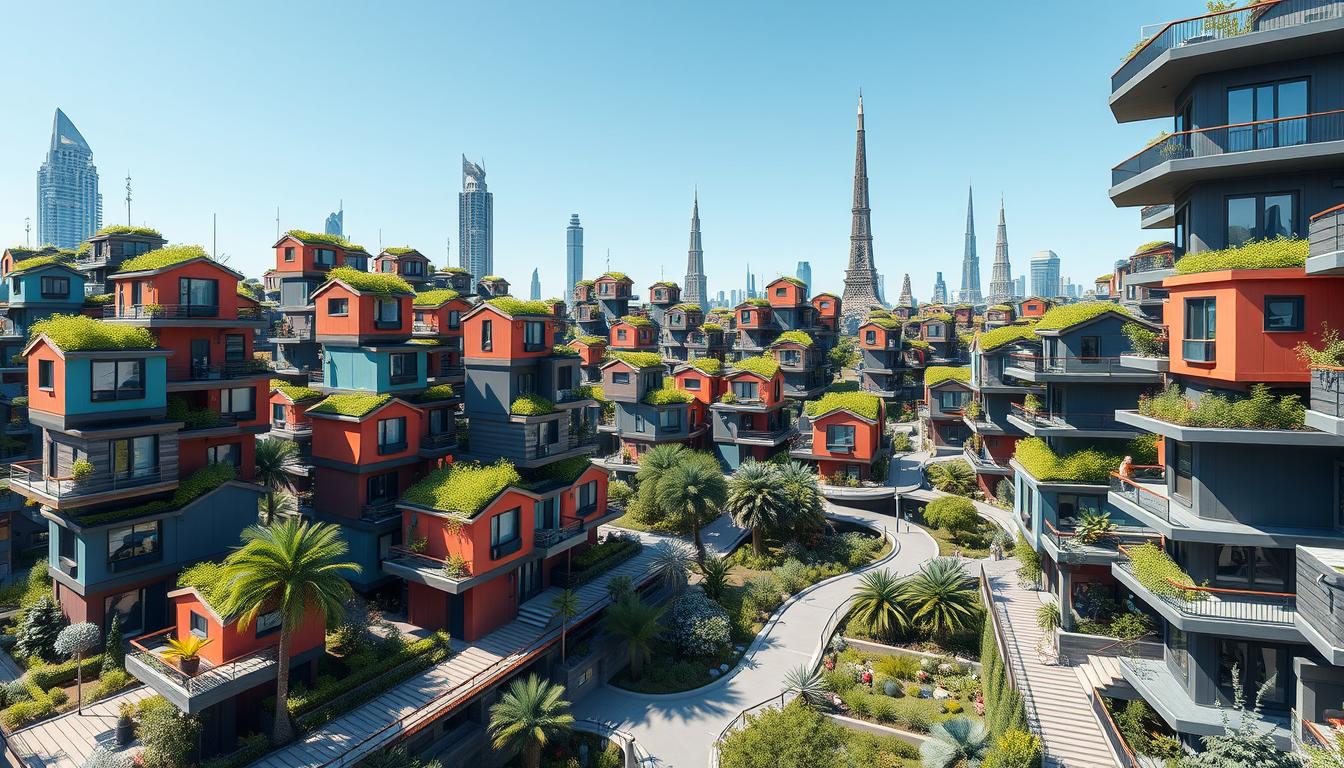In busy cities, space is very limited. That’s why stacking tiny homes is a smart idea. Innovative housing solutions use vertical space well. These homes are easy to move and set up, perfect for those wanting more space without losing comfort or style.
Stackable tiny homes are great for city living and for those who care about the planet. They help keep living spaces tidy and focus on what’s really important. This way, people can live in a way that’s good for the environment and doesn’t waste space.
Key Takeaways
- Stackable tiny homes offer a space-efficient alternative to traditional housing.
- These modular tiny homes are easy to transport and assemble.
- Maximising vertical space helps tackle urban housing constraints.
- Sustainable living is promoted through the eco-friendly design of these homes.
- Combining comfort with innovative design, stackable tiny homes meet modern living needs.
What Are Stackable Tiny Homes?
Stackable tiny homes are a new way to use land by stacking homes on top of each other. They are part of the compact modular house trend. This design makes it easy to move and change the layout of the home.
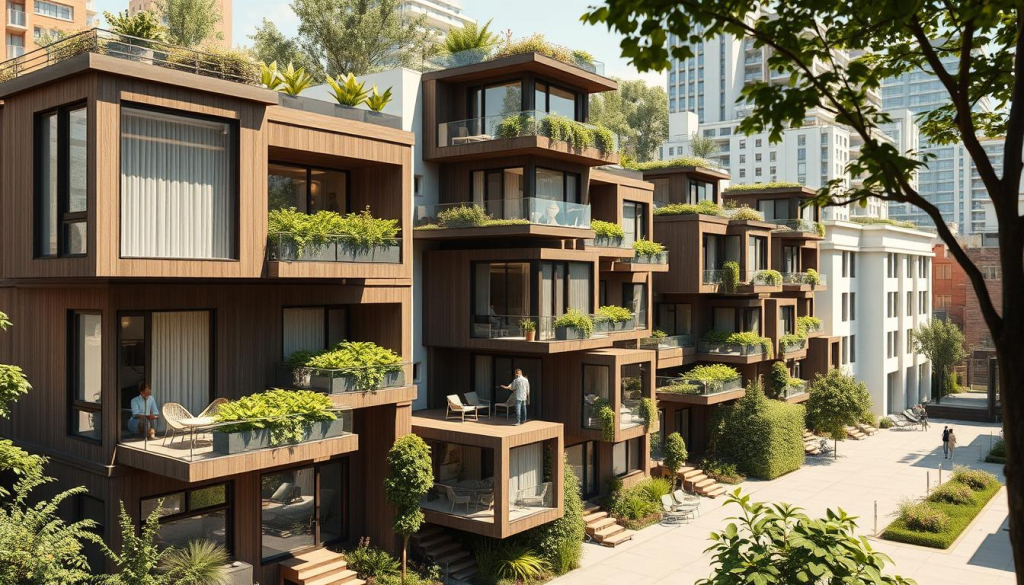
These homes have special features like being foldable and having built-in essentials. They offer a cozy living space like bigger homes but are more affordable. People can enjoy a lot of space without giving up comfort or practicality.
Stackable tiny homes are also strong against bad weather. For example, the Casita model by Boxabl can handle strong winds and heavy snow. This makes them a solid choice for homes in different climates.
Another great thing about these homes is how energy-efficient they are. Tiny houses made of dry stacked blocks can save up to 10% on bills. They are also made to last, with materials that don’t catch fire and resist dampness.
In short, stackable tiny homes are a smart choice for today’s living needs. They offer a mix of flexibility, strength, and cost-effectiveness. They make the most of available space, providing comfort and practicality.
Benefits of Stackable Tiny Homes
In today’s fast world, finding the best living solutions is key. Stackable tiny homes are a smart mix of saving space, being cost-effective, and eco-friendly. They appeal to many people.
Space Efficiency
Stackable tiny homes use vertical space well, ideal for cities where land is scarce. They stack units to make the most of space without taking up more ground. This setup not only saves space but also ensures a comfortable living area.
The UK, with its 10,000 tiny homes, sees their value, especially in crowded cities.
Cost-Effectiveness
Stackable tiny homes are also very affordable. They are smaller and use less material, which lowers building and upkeep costs. Their modular design also speeds up construction, saving money.
This cost-effectiveness has made them popular in the UK.
Sustainability
Stackable tiny homes focus on being eco-friendly. They use green materials and methods to reduce energy use. Their small size and modular design also cut down on waste.
With 25,000 off-grid homes in the UK’s countryside, the push for green living is clear.
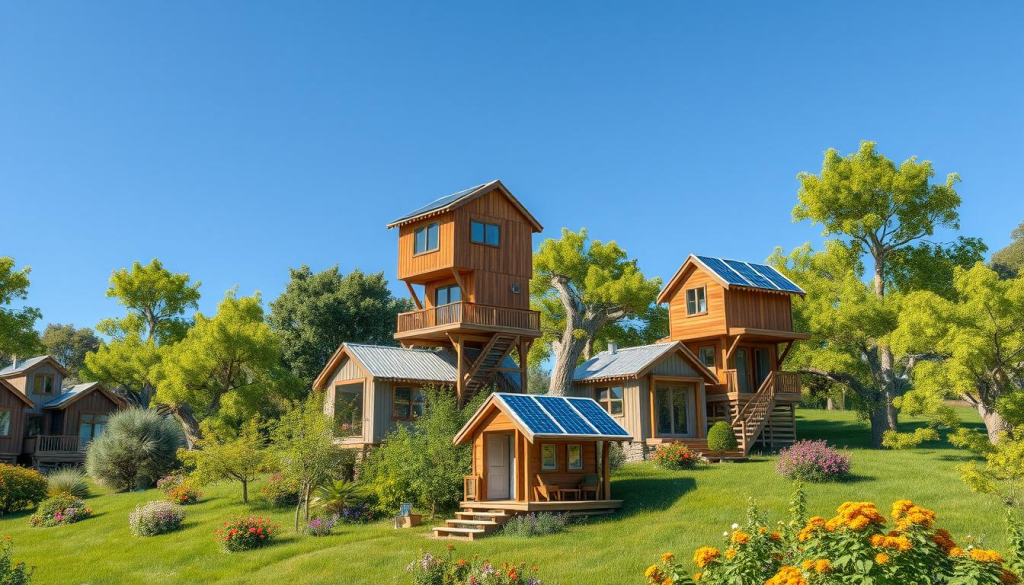
In summary, stackable tiny homes meet the need for saving space, being affordable, and being eco-friendly. Their growing popularity in the UK shows they’re more than a trend. They’re a sustainable housing option for the future.
Popular Designs and Features
Looking into the most popular designs and features in modern compact living can spark interest. Boxabl Homes, Kasita Homes, and other tiny home designs are making waves. They stand out for their unique and sustainable features.
Boxabl Homes
Boxabl Homes are known for their flexibility. They can be stacked and connected to meet different needs. These homes come with all the essentials and are built to last.
They are also designed to withstand harsh weather conditions. This makes Boxabl Homes a top choice for those who want a sustainable, compact home.
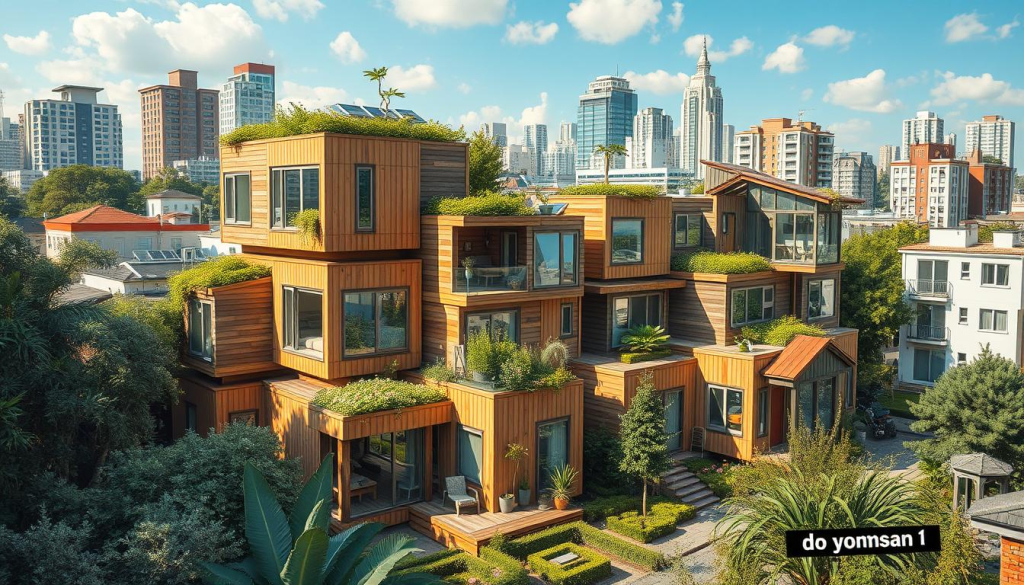
Kasita Homes
Kasita Homes are pre-fabricated units that can be stacked to form complex structures. They are great examples of how to make the most of small spaces. Kasita uses smart technology, like smart glass and home systems, to enhance the living experience.
This mix of technology and design makes Kasita Homes ideal for modern, compact living. It offers a seamless blend of functionality and style.
Innovative Features
Boxabl and Kasita homes boast innovative features that highlight their functionality and style. Some key features include:
- Space-saving furniture that maximises utility without compromising comfort.
- Energy-efficient appliances that support sustainable home features, reducing the environmental footprint of modern compact living.
- Modular components that allow customisation and easy reconfiguration, meeting varied lifestyle needs effectively.
These features showcase the essence of innovative tiny home designs. They offer a mix of practicality and sustainability in living spaces.
Design and Customisation Options
Custom tiny homes offer a wide range of design and customisation options. You can create a minimalist retreat or a fully-furnished micro home. The design flexibility lets homeowners bring their unique vision to life easily.
Many features can be added to the layout and structure. This provides a variety of personalised compact living solutions. Here are some popular customisation options:
- Multifunctional furniture: Sofa beds are great for guests and saving space.
- Foldable dining tables: These tables are practical for entertaining and saving space.
- Vertical space utilisation with loft beds: Loft beds with desks or storage are popular for saving floor space.
- Nesting tables: These tables stack when not in use, adding style and flexibility.
- Use of shelves for storage: Shelves on walls can hold books, decorations, or kitchen items, making the most of space.
- Storage solutions: Under stairs or under furniture can be used for storage, avoiding waste.
- Smart Technology Integration: Using voice or smartphone apps to control lights, temperature, and security is becoming more common.
- Energy-efficient upgrades: Sustainable insulation, energy-efficient windows, and solar panels are eco-friendly choices.
- Eco-friendly materials: Using reclaimed wood and non-toxic paints adds to the sustainability of the home.
- DIY customisation projects: There are endless ways to add personal style and functionality to tiny homes.
- Budget-friendly customisation tips: Affordable upgrades can be made with paint, furniture, storage, and lighting.
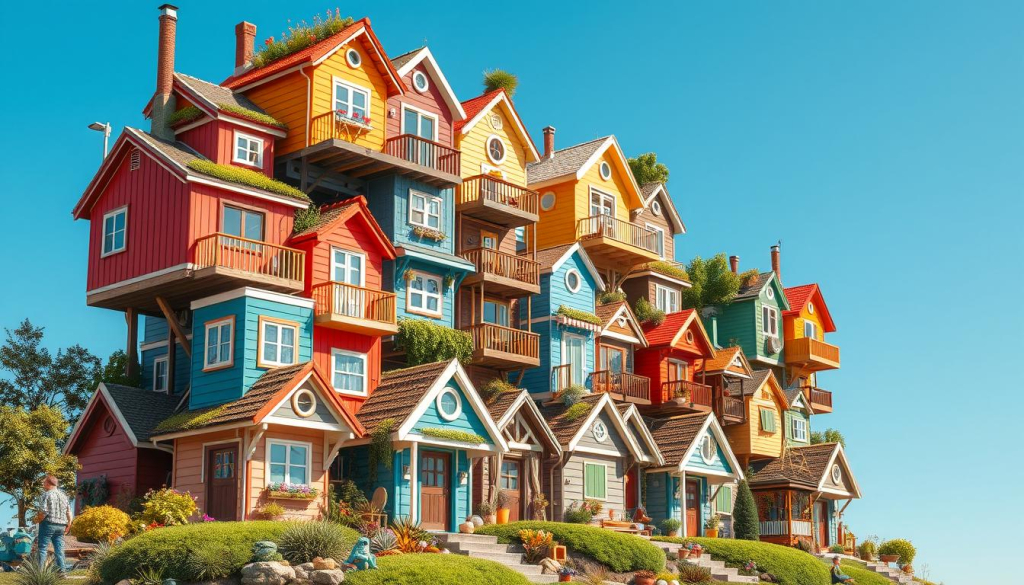
Stackable tiny homes offer a sustainable and innovative solution for modern living. They come with energy-saving features like R30 ceiling insulation. These homes are versatile, suitable for various lifestyles, and can be customised with expandable sections or green roofs.
In the UK, prices for these tiny homes start at £30,000 +VAT for a 3.6m model. This makes them accessible and appealing to a wide range of tiny home enthusiasts.
Challenges and Considerations
Stackable tiny homes come with their own set of challenges. It’s important to address these to make your tiny home investment successful and long-lasting.
Building Regulations
One big challenge is navigating regulatory hurdles. Building codes and zoning laws can change a lot depending on where you are. These rules affect where you can place your tiny home, its height, and the materials used.
It’s key to research local regulations well before starting any project. Talking to local planning authorities can help avoid delays and complications.

Land and Utilities
Finding the right land is a big challenge. It must meet regulatory requirements and other factors like soil stability and cost. The cost of land can vary a lot, depending on whether you’re in the city or countryside.
Setting up utilities like water, electricity, and waste management is also crucial. Working with local utilities can make this easier. For tips on finding the right land, check out this guide on land acquisition.
By carefully planning for utilities and land, you can make sure your tiny home is legal and fully functional.
Conclusion
Stackable tiny homes are a game-changer in modern housing. They tackle big issues in city living with smart, green solutions. One big plus is how fast they’re built, thanks to modular design.
This method lets builders work in controlled spaces, speeding up the process. This means homes are ready sooner, solving the problem of waiting for housing.
They also save money. Modular building cuts down on labour and waste, making projects cheaper. The detailed planning makes these homes a smart financial choice.
Compared to regular houses, tiny homes are a budget-friendly option. They cost less to build or buy, helping people save on housing costs.
From an environmental standpoint, tiny homes are a win. They use less material and energy, reducing carbon emissions. They often come with green features like solar panels and rainwater systems.
These homes support a greener lifestyle. They’re set to be key players in the future of tiny homes, improving our housing options.
To learn more about expandable container homes as a tiny living option, check out our in-depth look. These innovative solutions are shaping the future of tiny homes, making housing more accessible and eco-friendly.


